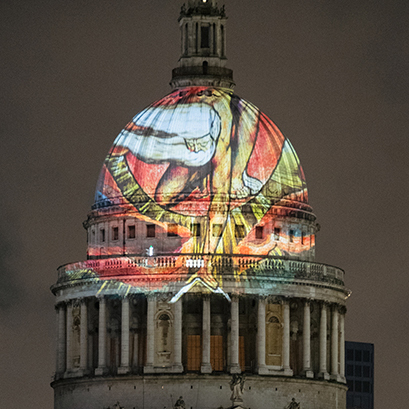The Blake Archive recently published “The Phoenix to Mrs. Butts,” and it occurs to me that this post deserves the title “The Phoenix to Mr. Getty,” since it concerns an exhibition that has been longer in the making than anyone could have anticipated. Next month, the Getty Center in Los Angeles will unveil William Blake: Visionary, postponed from 2020, when it was scheduled after the show at Tate Britain.
The catalogue, by Edina Adam and Julian Brooks—assistant curator and senior curator of drawings at the Getty, respectively—went on sale at the time and was reviewed for the Blake Quarterly by Luisa Calè.
Julian (with a final word from Edina) has kindly given us a preview of the exhibition; answers have been edited for style.
How challenging is it to reschedule? Do you aim to replicate the planned 2020 exhibition, or are there changes, through either choice or necessity?
It’s been a strange experience. We [Julian and Edina] both felt quite up to speed on Blake in 2020, and since then have moved on to other intensive projects, so have been trying to get our minds back in “Blake space,” whatever that is. The Getty exhibition program is also now presented in both English and Spanish, rather than just English, and this has involved substantial rethinking and redesign. We’ve dropped a number of objects to provide a clearer focus and a less crowded display: we feel the exhibition is stronger now. In the meantime the catalogue, published right on time in 2020, has sold out, so we’ve had to reprint it, a testament to the continuing appreciation of Blake.
Is there a difference between the way that you present Blake in a Los Angeles setting and the way that he was presented by the Tate in a London setting?
In England Blake is a national hero and (pretty much) a household name, whereas in LA people probably know some of the images but not necessarily his wider work. Nevertheless there’s been huge enthusiasm and anticipation around the exhibition. We’ve focused on particular aspects of his work to provide a full view of his career, and have concentrated on telling these stories through the very best examples available. Tate, the Yale Center for British Art, the Huntington, and Bob Essick have been very generous lenders to enable us to do this. Presenting the exhibition in Spanish and English has meant we have worked closely with Getty colleagues to make the show welcoming and engaging for as many audiences as possible, while not overwhelming visitors.
It would be good to hear about the audio guide.
The audio guide features narrative, and responses to Blake’s art, from visual artist Naudline Pierre, graphic novelist Grant Morrison, master printer Jacob Samuel, and university professor and writer Saree Makdisi.
Are there events planned in conjunction with the exhibition? (I see that the dates include Blake’s birthday.)
Yes, we’re working to do something special for his birthday! And we’re in the process of figuring out other programming with colleagues, including a talk on Nov. 12 by Tara Contractor on Blake’s use of gold, and there’s a lot more: please stay tuned.
Casting all curatorial impartiality aside, do you have a personal favorite among the works being exhibited?
Edina: My favorite is the Getty’s large color-printed drawing, Satan Exulting over Eve, because of its technical complexity. Blake created different types of patterns––or reticulations––in the printing process. Scholars have proposed a number of hypotheses regarding his technique, yet none of them explains in a satisfactory manner how he achieved the effects we see in the Getty object.
Julian: There are so many to choose from! But I always particularly love seeing the frontispiece to Jerusalem (plate 1), featuring Los with his lamp stepping into the doorway. The colors and light effects are spectacular. I can’t wait to have it here at the Getty, and we have the image as a big graphic in the exhibition too, which should look amazing.


